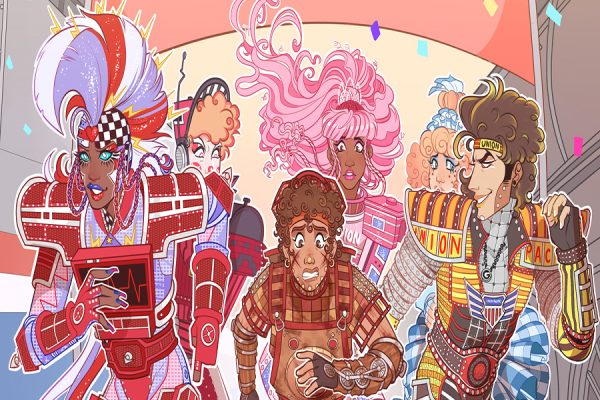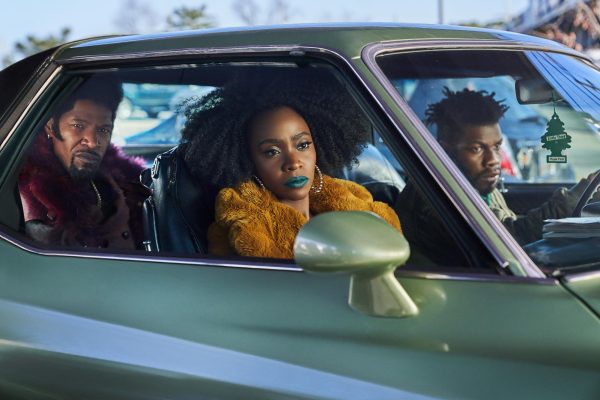16 Reasons (Tracks) Why I Love Dre’s New ‘Compton’
After 16 years of waiting, Dr. Dre has given us what he’s promised – a mind-blowing hip–hop album. In partnership with the release of the biopic “Straight Outta Compton,” the Dr. has unveiled a music project that is masterfully constructed. His tools are nostalgia paired with immediacy, beats that nearly overwhelm, and an all-star team.
The hour-long, 16-track project is more like a film where Dre directs the lens on others, and steps in to rap only when he sees fit. Before listening, the crowded track list made me wonder if Dre didn’t have the wherewithal to release a solo project – is he hiding behind his featured artists? No, he’s just constructing, as the album’s subtitle says, “a soundtrack” to one of rap’s most infamous cities. Dre calls his story “Compton.”
Reason 1. The “Intro” sets the stage. Using audio from an old documentary, there’s narration of Compton’s de-evolution from a paradise, to a paradise for blacks, to a community that is overrun by violence and drugs.
2. “Talk About It,” comes in flawlessly. The hook– “I don’t know everything,” indeed hooks. The trumpeted beat softens and slows, “But one thing I do know is one day I’ma have everything.” The beat quickens, trading this melody for quick claps that fire behind Dre’s first lines, “I just bought California– I was getting money before the internet, still got Eminem check I ain’t opened yet.” Clearly, Dre is still the man.
3. “Genocide” sounds like classic West Coast hip–hop. There’s a steady symbol shake underneath lyrics about “stone cold killers in the Compton streets.” A quick piano key ascends and descends throughout. Layers of singing voices (they appear in many forms throughout “Compton”) are overlapped with a bark – “Let me up, let me up!” Compton’s current champion Kendrick Lamar embodies the young and angry. His story is stolen jeeps, project buildings and inevitable death that could take him anytime: “I lie on the side of a one way street, nowhere to go, death all I can see.” His harsh tone leads to others doo-wop and beat boxing.
4. “It’s all on Me,” is a track of remembrance. Dre recalls his NWA origins and oppression he felt as a young black male. Dre and fellow rap-group members introduced hip–hop to these harsh stories 30 years ago, a style that has continued to captivate me and other hip–hop lovers.
5. “All in a Day’s Work,” is one of my favorite anthems. It begins with a note about fear being a firepower that can propel rather than oppress. Dre proves he is still an eye for talent, incorporating California up-and-comer Anderson .Paak, who sings with beautiful shakiness, and raps with high-pitch velocity. This track is mind blowing, layering electric and bass guitar, drums, tambourine, trumpet and a twang that is uniquely West Coast rap. Slave chains drag and shake underneath a hum and chant, “We gotta work, let’s get back to work,” highlighting the song’s inescapable/universal theme.
6. The story flows seamlessly into its next chapter, “Darkside/Gone.” The song samples the late Eazy-E, one of Dre’s early rap partners and features another flawless Kendrick verse. The song continues the themes of murderous streets, and the hard work needed to escape them. Dre promotes his kingly rap status: “I’m the motherfucking one to bread ‘em and lead ‘em, in a league of my own, you ain’t even made it up to my throne.” Marsha Amboisus’ melodic voice brings a layer of perceived serenity.
7. “Loose Cannons” features a violent, harsh Xzibit who kicks the door down and smashes faces. The beat features screechy, disarming tones mixed with light cymbals, then deep trumpets and drums that are steady in their quick four-hit ascension. Suddenly, ominous piano notes become overwhelming, backed by a quick snare drum. The instrumentals are a work of art.
8. “Issues” partners .Paak with classic Dre partner, Ice Cube, who spits “You know my name, my reputation, you know what it is.” Dre picks it up with “Just havin’ some fuckin’ fun with this rap shit.” They rule over Compton, a place where the weak drown in sirens and violence.
9. “Deep Water” is another favorite – a track formed with distortion and ghostly echoes that move like waves between the left and right speaker. It all enacts drowning, climaxed with a man gasping against shark-filled waters with a disorienting and haunting trumpet background. It’s the deep, dangerous sea of Compton; it’s Dre: “My influence runs deep like the ocean.”
10. “One Shot One Kill” features a Snoop Dogg that sounds as harsh, triumphant and steady as the beat he raps over: “Bow in the presence of a living legend.” What’s a Dre album without Snoop?
11. In “Just Another Day” Dre steps aside for the harsher Compton-born lyricist The Game. His real-life experience adds authenticity to the album. Dre trusts him with this city-anthem about bloodstains, gun-laced belts, and “crack fiends on the back streets.” Asia Bryant sings “it’s just another day.”
12. “For the Love of Money” gives the reason for blood stains. The quick, interwoven snare/piano never quit, like the hustle for paper. The song slows with dreamy guitar strums shaken with steady amp distortion. The hustle satisfies.
13. “Satisfiction” features wise Snoop again. Snoop, Dre, and King Mez target idiotic, lying rappers who go bankrupt over their cars, shoes, and parties. By now the listener realizes that every song is sonic gold. Even in this simpler tune, the intricacy of dampened voices and subtle electronic shakes keep heads bobbing and minds asking, “Dre, how the hell did you come up with that?!”
14. In “Animals” Dre raps in between Anderson .Paak’s singing. They are set behind a ringing and quiet harp that comes and goes. The snare is simple and steady. The theme is authenticity. “No tricks no gimmicks, I be stomping down demons,” sings .Paak. “Where the people disagree, the upper class hate, middle don’t exist.” .Paak and Dre voice the lower-class animals, a satisfying duet that seamlessly retells the ubiquitous theme.
15. “Medicine Man” is gripping. Eminem tells the story of his early relationship with Dre, and its everlasting influence. His 90-second verse builds into fast-paced, mind-blowing brilliance. It heightens your heart rate; his voice startles like the gunshots fired throughout the verse.
16. The final chapter is “Talking to My Diary,” one of the only tracks that Dre raps solo. It’s an introspective scene carried by a strong clap and metronome that moves like a quick, steady sound wave. The trumpet-lead ‘end’ moves quickly down the ever-winding Compton streets, as if to say, ‘cut, fade to black.’
Travis LeClair joined the Basement Medicine staff in Spring 2014, assuming the position of staff reporter.








